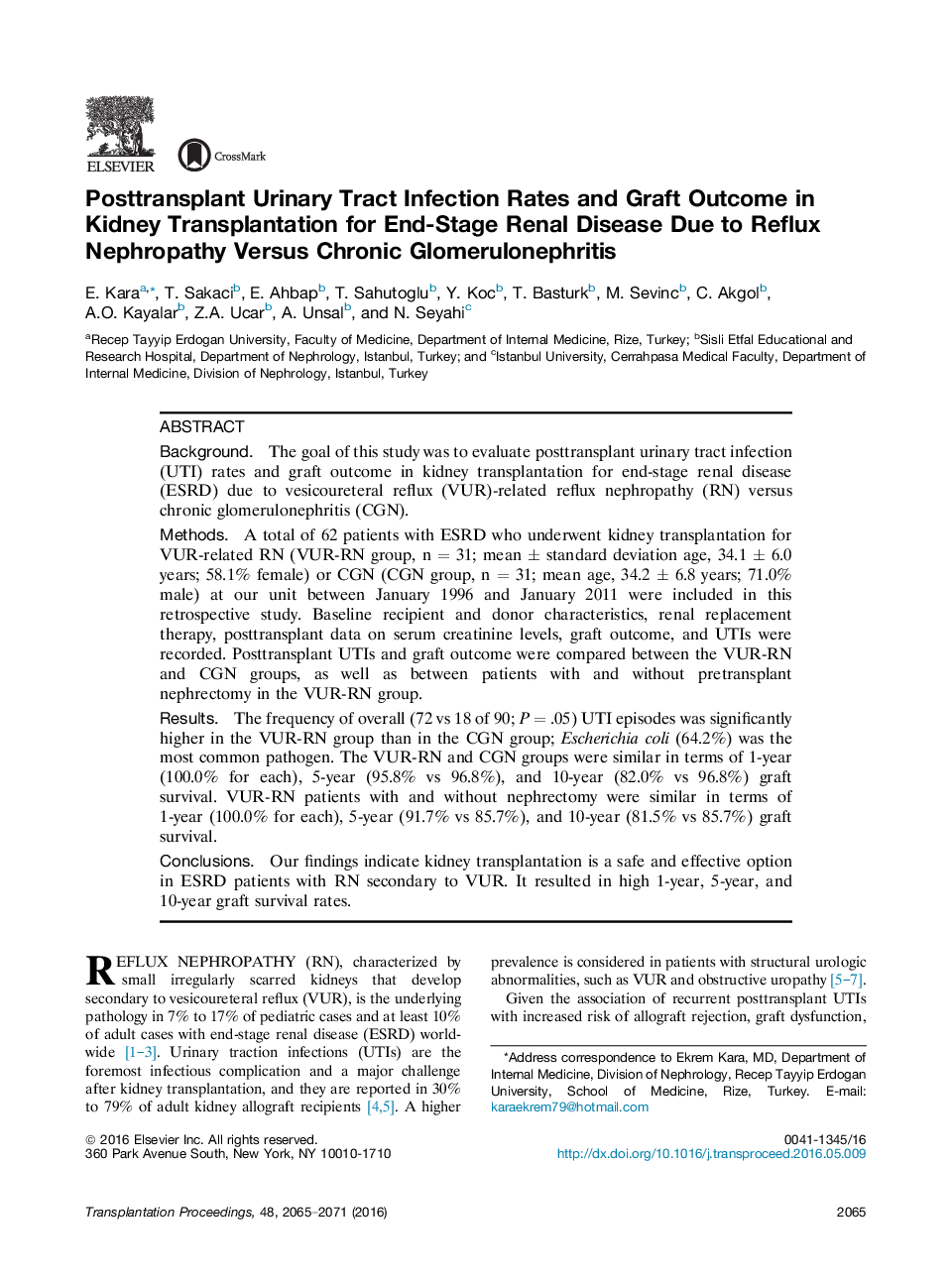| کد مقاله | کد نشریه | سال انتشار | مقاله انگلیسی | نسخه تمام متن |
|---|---|---|---|---|
| 5729145 | 1411676 | 2016 | 7 صفحه PDF | دانلود رایگان |
- Posttransplant outcome was similarly favorable in end-stage renal disease patients with vesicoureteral reflux (VUR)-related reflux nephropathy and chronic glomerulonephritis.
- Graft survival rates were high in patients with VUR despite frequent posttransplant urinary tract infections.
- Pretransplant nephrectomy had no effect on posttransplant urinary tract infection and outcome in VUR.
BackgroundThe goal of this study was to evaluate posttransplant urinary tract infection (UTI) rates and graft outcome in kidney transplantation for end-stage renal disease (ESRD) due to vesicoureteral reflux (VUR)-related reflux nephropathy (RN) versus chronic glomerulonephritis (CGN).MethodsA total of 62 patients with ESRD who underwent kidney transplantation for VUR-related RN (VUR-RN group, n = 31; mean ± standard deviation age, 34.1 ± 6.0 years; 58.1% female) or CGN (CGN group, n = 31; mean age, 34.2 ± 6.8 years; 71.0% male) at our unit between January 1996 and January 2011 were included in this retrospective study. Baseline recipient and donor characteristics, renal replacement therapy, posttransplant data on serum creatinine levels, graft outcome, and UTIs were recorded. Posttransplant UTIs and graft outcome were compared between the VUR-RN and CGN groups, as well as between patients with and without pretransplant nephrectomy in the VUR-RN group.ResultsThe frequency of overall (72 vs 18 of 90; P = .05) UTI episodes was significantly higher in the VUR-RN group than in the CGN group; Escherichia coli (64.2%) was the most common pathogen. The VUR-RN and CGN groups were similar in terms of 1-year (100.0% for each), 5-year (95.8% vs 96.8%), and 10-year (82.0% vs 96.8%) graft survival. VUR-RN patients with and without nephrectomy were similar in terms of 1-year (100.0% for each), 5-year (91.7% vs 85.7%), and 10-year (81.5% vs 85.7%) graft survival.ConclusionsOur findings indicate kidney transplantation is a safe and effective option in ESRD patients with RN secondary to VUR. It resulted in high 1-year, 5-year, and 10-year graft survival rates.
Journal: Transplantation Proceedings - Volume 48, Issue 6, JulyâAugust 2016, Pages 2065-2071
